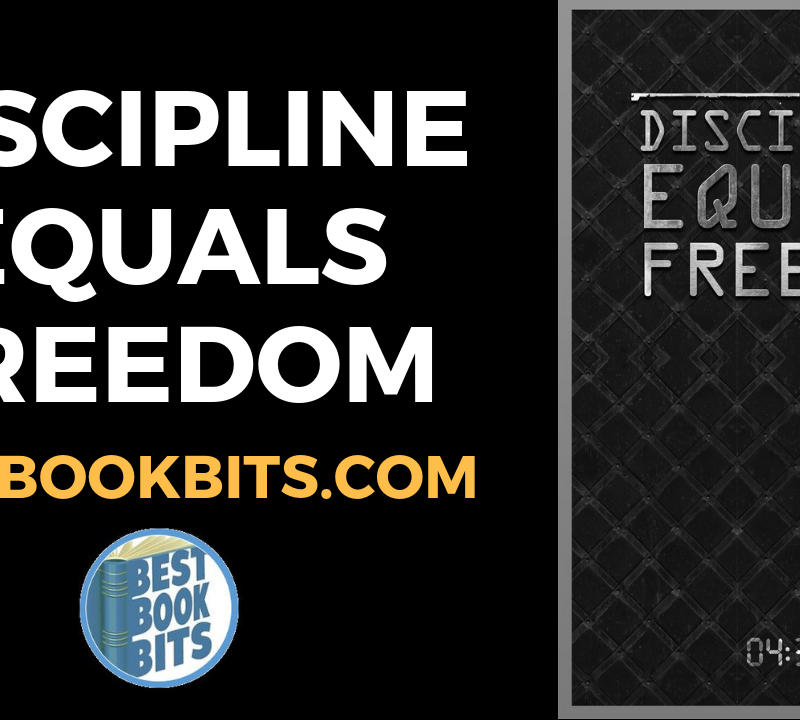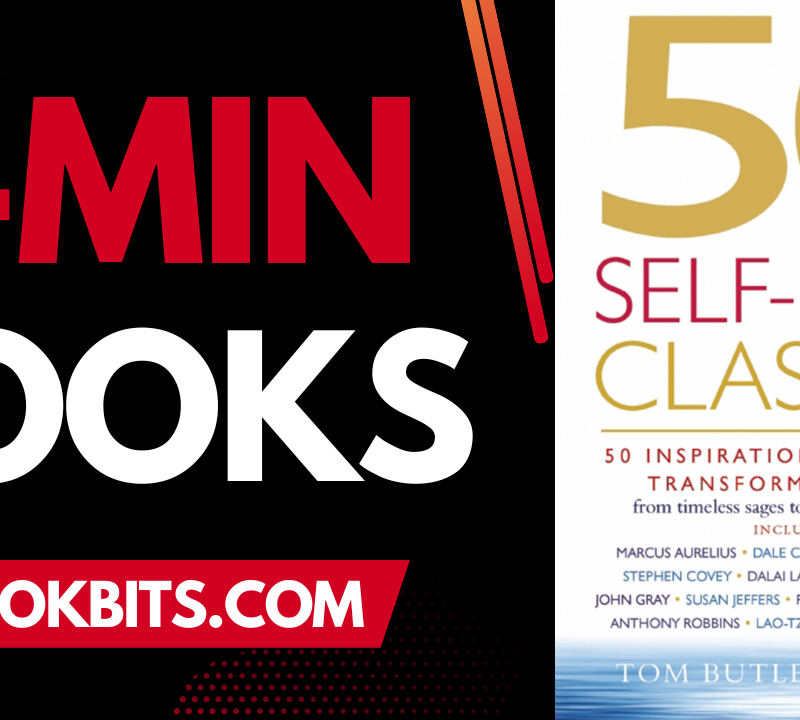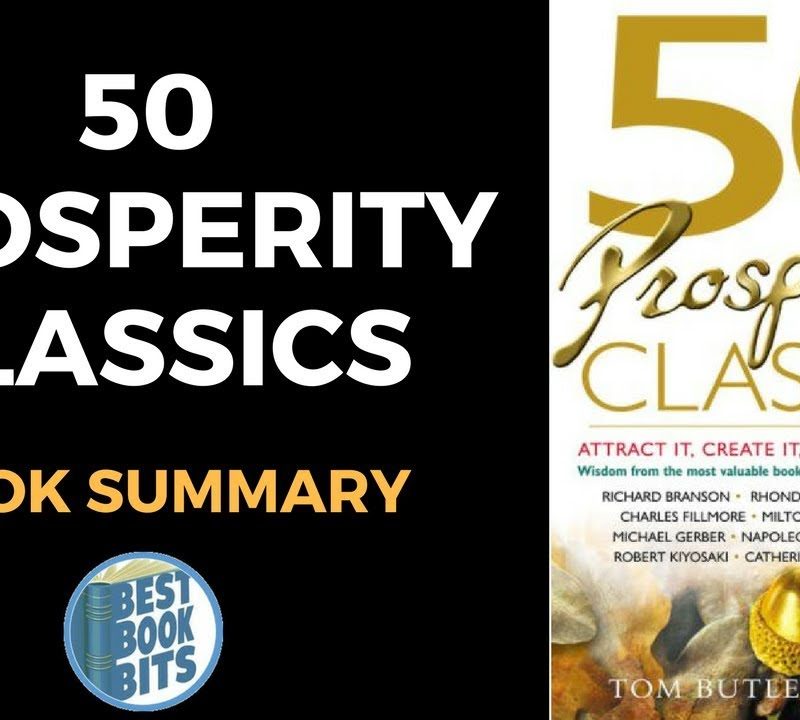★DOWNLOAD THIS FREE PDF SUMMARY HERE
? MY FREE BOOK TO LIVING YOUR DREAM LIFE”
? SPONSOR BESTBOOKBITS BY USING PATREON
? SUPPORT BESTBOOKBITS BY CLICKING THE LINKS BELOW
- 150 PDF Summaries
- Coaching Program
- Subscribe to My Channel
- Website
- Spotify
- Book Club
- Mailing List
Based on twelve years of research, she argues that vulnerability is not weakness, but rather our clearest path to courage, engagement, and meaningful connection. Daring Greatly is about truth and trust, in our organizations, families, schools, and communities. She asks us to consider that vulnerability is necessary. When we show up and allow ourselves to be seen and heard, we are being vulnerable. We are daring greatly.
Brown explains how vulnerability is both the core of difficult emotions like fear, grief, and disappointment and the birthplace of love, belonging, joy, empathy, innovation, and creativity. She explains that when we shut ourselves off from vulnerability, we distance ourselves from the experiences that bring purpose and meaning to our lives.
Daring greatly is a practice and a powerful new vision for letting ourselves be seen.
Brown doesn’t ignore the fear associated with being vulnerable. She’s spent years examining fear and shame. She’s open about how she’s felt fear and how it has held her back at various points in her life, both personally and professionally. She also, very rightly, points out that uncertainty and risks are part of life. We can’t ignore them. Why shouldn’t we face those fears straight on?
Brown writes about Living Wholeheartedly often in this book. She defines ten guideposts for Wholehearted Living:
1. Cultivating authenticity- letting go of what people think.
2. Cultivating self-compassion- letting go of perfectionism.
3. Cultivating a resilient spirit- letting go of numbing and powerlessness.
4. Cultivating gratitude and joy- letting go of scarcity and fear of the dark.
5. Cultivating intuition and trusting faith- letting go of the need for certainty.
6. Cultivating creativity- letting go of comparison.
7. Cultivating play and rest- letting go of exhaustion as a status symbol and productivity as self-worth.
8. Cultivating calm and stillness- letting go of anxiety as a lifestyle.
9. Cultivating meaningful work- letting go of self-doubt and “supposed to”.
10. Cultivating laughter, song and dance- letting go of being cool and “always in control”.
Wholehearted living is about engaging in our lives from a place of worthiness. It means cultivating the courage, compassion, and connection to wake up in the morning and think “no matter what gets done and how much is left undone, I am enough”. It’s going to bed at night and thinking “yes, I am imperfect and vulnerable and sometimes afraid, but that doesn’t change the truth that I am also brave and worthy of love and belonging” (p. 10).
Brown starts the book off with the following quote:
“It is not the critic who counts; not the man who points out how the strong man stumbles, or where the doer of deeds could have done them better. The credit belongs to the man who is actually in the arena, whose face is marred by dust and sweat and blood; who strives valiantly; . . . who at best knows in the end the triumph of high achievement, and who at worst, if he fails, at least fails while daring greatly.” —Theodore Roosevelt (p. 1).
To Brown, this is vulnerability. Vulnerability is not knowing victory or defeat, it is understanding the necessity of both; it’s engaging. It’s being all in.
What it means to Dare Greatly.
“Vulnerability is not weakness, and the uncertainty, risk and emotional exposure we face every day are not optional. Our only choice is a question of engagement. Our willingness to own and engage with our vulnerability determines the depth of our courage and the clarity of our purpose; the level to which we protect ourselves from being vulnerable is a measure of our fear and disconnection” (p. 2).
When we spend our lives waiting until we are perfect before walking into an arena, we sacrifice relationships and opportunities that may not be recoverable, we squash our precious time, and we turn our backs on our gifts, the unique contributions only we can make. Perfect does not exist in the human experience. We must walk into the arena, whether a new relationship, an important meeting, our creative process, a difficult conversation, or an intense class with a lot of sharing, with the courage and the willingness to engage. Rather than sitting on the sidelines and passing judgment and advice, we must dare to show up and let ourselves be seen. This is vulnerability. This is daring greatly.
Intro: Adventures in the arena.
Question- When do you feel the most vulnerable?
Answer- When I am in fear. When I am anxious and unsure about how things are going to go, or if I am having a difficult conversation, or if I am trying something new or doing something that makes me uncomfortable or opens me up to criticism or judgment.
Here, Brown shares a little about herself, her personal struggles with being vulnerable. After 12 years of research, she has a different way of working with her own vulnerabilities. She writes “the surest thing I took away from getting my BSW, MSW, and Ph.D. in social work is connection is why we’re here. We are hard wired to connect with others, it’s what gives purpose and meaning to our lives, and without it there is suffering” (p. 8).
She started studying connection, but people kept telling her about the fear of not being worthy of connection so Brown became a shame and empathy researcher. She soon came to understand the relationships between vulnerability, shame, belonging and worthiness. Vulnerability is the core, the heart, the center, of meaningful human experiences.
Chapter 1: Scarcity-Looking inside our culture of “never enough”.
Brown writes about how worrying about scarcity is our culture’s version of post-traumatic stress. It happens when we’ve been through too much, and rather than coming together to heal (which requires vulnerability), we’re angry and scared and at each other’s throats. This happens not only in the larger culture, but in family, work, school and community cultures as well. They all share the same formula of shame, comparison and disengagement. She goes into detail about shame, comparison and disengagement (the three components of scarcity) and how we can work with these to change our ideas of scarcity.
Chapter 2: Debunking the vulnerability myths.
Myth 1: “Vulnerability is weakness”- vulnerability is the core of all emotions and feelings. To feel is to be vulnerable. To believe that vulnerability is weakness is to believe that feeling is weakness. To foreclose on our emotional life out of fear that the costs will be too high is to walk away from the very thing that gives purpose and meaning to living. Brown looks at the definition of the word vulnerable.
According to the Merriam-Webster Dictionary, the word vulnerability is derived from the Latin word vulnerare, meaning “to wound”. The definition includes “capable of being wounded” and “open to attack or damage”. She goes on to explain Merriam-Webster’s definition of weakness as “the inability to withstand attack or wounding”. Brown points out that these are two very different concepts and that one could argue that weakness often stems from a lack of vulnerability. When we do not acknowledge how and where we are tender, we are more at risk of being hurt.
Myth 2: “I don’t do vulnerability”- when we pretend that we can avoid vulnerability we engage in behaviors that are often inconsistent with who we want to be.
Myth 3: “Vulnerability is letting it all hang out”- Vulnerability is about sharing our feelings and experiences with people who have earned the right to hear them. It is an integral part of the trust building process. It is not over-sharing, purging, or celebrity style social media.
Myth 4: “We can go it alone”- No, we need support. We need people who will let us try on new ways of being without judging us. Staying busy and micro-managing things is a way of protecting ourselves and trying to go it alone. This gets exhausting. We can be loved for our vulnerabilities, not despite them. It is a waste of time to evaluate our worthiness by weighing the reactions of the people in the stands. The people that truly care about us, will be there no matter what the outcome is.
Chapter 3: Understanding and combating shame.
Shame derives its power from being unspeakable. That’s why it loves perfectionists-it’s so easy to keep them quiet. If we cultivate enough awareness about shame to name it and speak to it, we’ve basically cut it off at the knees. It is like the Naropa way of “turning towards”. If we speak it, it begins to wither. If we can share our stories with someone who responds with empathy and understanding, or can cultivate empathy and self-compassion with ourselves, shame can’t survive.
Brown writes about the four elements of shame resilience.
- Recognizing shame and understanding its triggers.
2. Practicing critical awareness.
3. Reaching out.
4. Speaking shame.
She goes on to talk about the differences of shame within men and women. Brown states “if we are going to find our way out of shame and back to each other, vulnerability is the path and courage is the light. To love ourselves and support each other in the process of becoming real is perhaps the greatest single act of daring greatly” (p. 110).
Chapter 4: The vulnerability armory.
Brown states “as children we found ways to protect ourselves from vulnerability, from being hurt, diminished, and disappointed. We out on armor, used our thoughts, emotions and behaviors as weapons, and we learned how to make ourselves scarce, even disappear. Now as adults, we must be vulnerable. We must take off the armor, put down the weapons, show up and let ourselves be seen” (p. 112). She points out to practice gratitude and to see the joy in ordinary moments. She writes about the different shields we can put up such as letting it all hang out, floodlighting, viking or victim, numbing, perfectionism, the smash and grab, serpentining, cynicism, criticism, cool, and cruelty.
Chapter 5: Mind the gap-Cultivating change and closing the disengagement divide.
Brown writes “we have to pay attention to the space between where we’re actually standing and where we want to be. More importantly, we have to practice the values that we’re holding out as important in our culture” (p. 172). We don’t have to be perfect, just engaged and committed to aligning values with action. She talks about the disengagement divide. Sometimes we disengage to protect ourselves and sometimes we disengage because we feel like the people who are leading us (bosses, teachers, parents, politicians, etc) aren’t living up to their end of the social contract.
Chapter 6: Disruptive engagement-Daring to rehumanize education and work.
Brown talks about understanding how scarcity is affecting the way people lead and work. She writes about shame permeating our culture, like in schools and organizations, where people in leadership roles use bullying, criticizing, delivering public reprimands or set up reward systems that intentionally belittle, shame or humiliate others. She talks about minding the gap with feedback.
Chapter 7: Wholehearted parenting-Daring to be the adults we want our children to be.
Brown states “who we are and how we engage with the world are much stronger predictors of how our children will do than what we know about parenting. In terms of teaching our children to dare greatly, in the never enough culture, the question isn’t so much “are you parenting the right way?” as it is “are you the adult that you want your child to grow up and be?” (p. 214).
Basically, are you leading by example? When it comes to our sense of love, belonging, and worthiness, we are shaped by our families of origin. What we hear, what we are told, and perhaps most importantly, how we observe our parents engaging in the world. I am reminded of the cliché parental quote, “do as I say, not as I do”. According to Brown, this does not work so well. I also think about Duey’s statement to little children, “I love you AND don’t stick your finger in the outlet”.
Childhood experiences of shame change who we are, how we think about ourselves, and our sense of self-worth. Brown suspects that children store shame as trauma and hopes one day there will be research to support this. She points out another important aspect that parents have to step back and let their children deal with conflict, learn to assert themselves and have the opportunity to fail. Parents cannot do everything for their children.
To end her book, Brown tells a story of a young man who dared greatly. The man’s parents had sent him links to Brown’s TED Talks and he really liked her ideas of Wholeheartedness and daring greatly. He tells her that her talks inspired him to tell his girlfriend of a few months that he loved her. The girlfriend said she thought he was “awesome”, but that they should date other people. When the man got back to his apartment after talking to his girlfriend, he told his two roommates what happened. They both looked at him and said “what were you thinking, man?” He tells Brown, “I felt a little stupid at first. For second I was mad at myself and even a little pissed at you. But then I thought about it and remembered why I did it”. He told his roommates “I was daring greatly, dude”. They looked at him, nodded their heads and said “oh, right on, dude”.
Brown writes “daring greatly is not about winning or losing. It’s about courage. In a world where scarcity and shame dominate and feeling afraid has become second nature, vulnerability is subversive.
Uncomfortable. It’s even a little dangerous at times. And, without question, putting ourselves out there means there’s a far greater risk of feeling hurt. But as I look back on my own life and what daring greatly has meant to me, I can honestly say that nothing is as uncomfortable, dangerous, and hurtful as believing that I’m standing on the outside of my life looking in and wondering what it would be like if I had the courage to show up and let myself be seen” (p. 249).
★DOWNLOAD THIS FREE PDF SUMMARY HERE
? MY FREE BOOK TO LIVING YOUR DREAM LIFE”
? SPONSOR BESTBOOKBITS BY USING PATREON
? SUPPORT BESTBOOKBITS BY CLICKING THE LINKS BELOW













